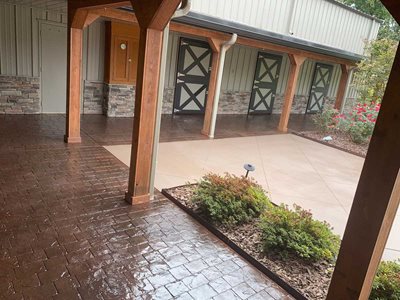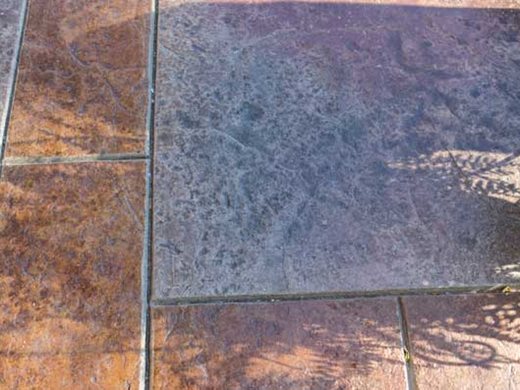
Sealer is an important part of decorative concrete. Sealer is also the biggest source of technical issues and failures. Most failures comes from poor sealer application. This is why it is so important to apply concrete sealer correctly. Choose the right sealer for the job and put it down correctly. This will avoid expensive callbacks and repairs.
Sealers are a wide range of materials designed to be applied to the surface of concrete for protection. Every sealer has its own capabilities and qualities. Many sealers are designed to protect against common food and chemical stains. Sealers are often used to control water penetration or protect against harmful salts. They may even resist abrasion or improve curing.
Choosing the right sealer is the first step. Research the features and limitations of the sealer you intend to use. Compare this with the expected conditions faced by the concrete. For example, a stamped concrete sealant will probably need to enhance color and add gloss for the desired appearance. It will also need to protect the concrete from mild staining and dirt. It won't, however, need to be durable against industrial chemicals or high traffic. Age of the concrete also matters. Most sealers are not designed to go on concrete that has not fully cured. Before the concrete has fully cured, use a concrete cure and seal. That will protect the concrete, seal and cure it until it is ready for a regular sealer.
The most common kind of decorative concrete, colored concrete, and stamped concrete sealers are acrylic film forming sealers. These are the workhorse of the decorative market. They protect against common residential stains and dirt. These sealers will also repel water and enhance appearance.


Application methods for sealers are actually fairly simple. Most sealers are best applied using a specialty sprayer. Spray the sealer in multiple thin coats as evenly as possible. This will reduce the likelihood bubbling, over application, and many other common sealer problems. For best results, we recommend using a Swissmex sprayer with a Brickform Precision Tip. Some sealers can be applied using a roller. If spraying is an option, that is usually the best case. The exceptions would be some interior coatings. Follow the instructions in the technical information sheet for your sealer for best results.
Almost more important that how to apply concrete sealer is how to prepare the surface for sealer. This is where most sealer failures happen. The first step is to remove concrete sealer if any is present. Existing concrete often times has residual sealer left over from previous installations. Even just a little leftover sealer can cause major failures. Most sealers will require at minimum, a clean surface free of dirt and contaminants. They will also require a light etch or grinding. This removes contaminants and makes the concrete more porous.
Before you apply a decorative concrete sealer, always make sure to read all technical documents for your chosen sealer, additives, and surface preparation chemicals. Follow the instructions carefully. Be mindful of surface defects, stains, and potential bond breakers. If properly used, sealer can make your concrete look and preform better for years to come. Check out our surface preparation guide here.
Explore impressive concrete installations to find inspiration for your next project.
Find out how much color and fiber you'll need for any size project.